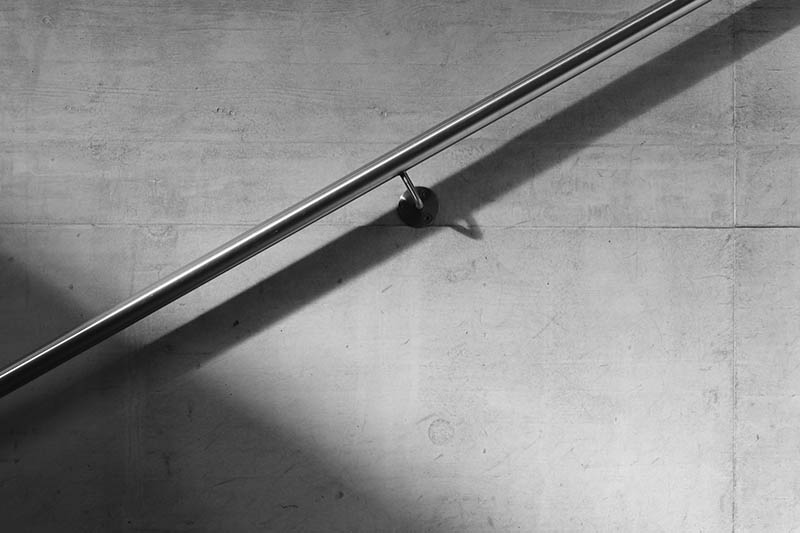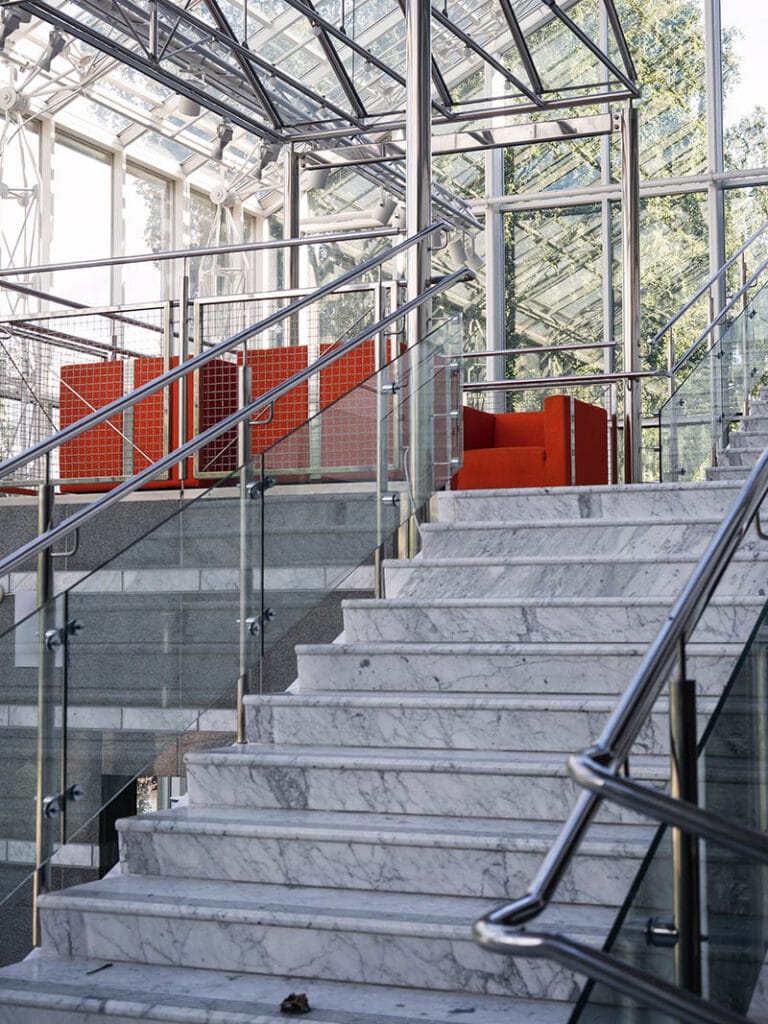When Is a Handrail Required for Stairs? Facts & FAQ
-
Codee Chessher
- Last updated:

Handrails are an essential safety tool for stairs, providing stability while you ascend or descend the steps. Many shorter stairways don’t have rails at all, and it can be confusing to know how many steps call for a handrail.
According to the International Code Council¹, stairs need a handrail when there are more than four risers. Risers are the vertical parts in between steps, so that means any stairway with four or more steps needs a handrail.
Handrail Requirements
Handrails must be between 30–38 inches high from the leading stair edge. This ensures that they’re at a comfortable height for you to grab when you’re traversing the stairs. It is also important to mention that local building codes may have unique requirements involving handrails or guardrails. For instance, some localities require a handrail if the total rise or height of the stairway is more than three feet. This means any staircase that goes up three feet or more needs a rail.
Handrail requirements usually focus on the number of rises because height is less important than the number of steps. More steps make you tired and more likely to trip, so a handrail is an important accessory.

Is a Guard Different From a Handrail?
This is where things get tricky. Handrails are defined as horizontal or sloping rails for grasping, while guards are a component or series of components that minimize the risk of falling. This can be a half-wall, wall, railing, or bench. Simply put, guards are designed to keep you from falling on high stairways.
While guards can be rails, handrails are specifically for you to grab when you’re going up or down the stairs. Handrails also may not be designed to hold the weight of a person like a guard. On many two-story homes with wood banisters, the guardrail also doubles as a handrail. The only difference is they’re studier and can hold more weight.
Guards are also required in different situations. Most commonly, you’re required to have a guard on the open side of any stairway that’s higher than 30 inches. The guard itself must be 34 inches in height, and guards on elevated areas have to be 36 inches high. The space may be filled with pickets, balusters, or half-walls.
Which Side Needs a Handrail?
You typically only need a handrail on the open side of a stairway, so stairs with a wall on either side don’t need a handrail. Stairs with open sides, on the other hand, would need handrails on both sides. Whether a guard would be required in this case depends on how high the stairs are—more than 30 inches, and you’d need one.

OSHA Handrail Requirements
Also known as the Occupational Safety and Health Administration, OSHA¹ has very specific handrail requirements to foster safe working environments. Let’s check some of them out below in more detail.
- Handrail height must be between 30–37 inches high
- Spaces between rails can’t be larger than 19 inches (like gaps between balusters)
- Railing height should be 42 inches from the first step to the top of the railing
- Hand or guardrails must hold 200 pounds of weight
Keep in mind that these requirements only apply to businesses where people work. Local residential building codes dramatically vary from OSHA and other standards. Always check to make sure that your stairs are up to code when you’re in the planning stages because changing plans later on is very difficult.
Conclusion
Handrails are a crucial safety mechanism that helps you climb up and down stairs. Guardrails may double as handrails and support the weight of a person, but it’s always worth checking to make sure that your handrails meet local building codes or OSHA standards for businesses.
Featured Image Credit: Pascal Meier, Unsplash
Contents

